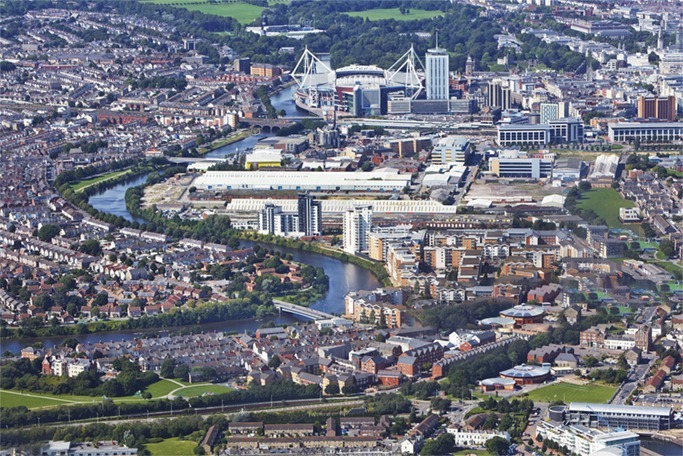Introduction
Cardiff is the capital and most populous city of Wales, UK. Because it is in a better position than its other cities, it is considered the economic, educational, sports, tourism, cultural, media and government centre of Wales. According to the latest census conducted in 2017, the population of the city stands at 364,248 people; the population of the city and its suburbs is estimated at 479,000. Cardiff is an ancient part of Wales and is also known as the City of Magic. It was a small town until the early nineteenth century, when it became a major port for coal transport in the region, and thus an industrial city. Cardiff was established as a royal city in 1905, and was officially recognised as the capital of Wales in 1955.
Geography
The centre of Cardiff is relatively flat and bordered by hills to the east, north and west. Its geographical features influenced its development as the world’s largest coal port, especially its proximity and easy access to the coal fields of the South Wales Valley. Cardiff is located in the north temperate region and has a maritime climate, characterised by temperate, often cloudy, humid and windy weather. Summers are hot and sunny, with temperatures averaging between 19 degrees Celsius (66 degrees Fahrenheit) and 22 degrees Celsius (72 degrees Fahrenheit). Winters are relatively humid, but rainfall is rarely high and temperatures usually remain above freezing. The weather feels mostly the same during spring and autumn, with temperatures reaching over 14 degrees Celsius (57 degrees Fahrenheit) – as well as the average annual daytime temperature – with rain unpredictable at any time of the year, although rain showers do not last as long in the summer.
Sport
After 1990, Cardiff progressed day by day, including the construction of the Wales National Assembly building, a large fountain in Cardiff Bay, new construction in the city centre and, consequently, the redevelopment of the city, and the start of football matches at the Millennium Stadium in Cardiff.
Tourism
Cardiff is an ancient city that feels like the city of magic upon arrival. The city plays an important role in the economy, tourism and government of Wales. According to official figures, the number of tourists in Cardiff in 2006 was estimated at more than 11,700,000. On the banks of the Tuff River, you will see Cardiff Castle, Cardiff’s most famous landmark. This castle has been occupied by England in the past. Cardiff Castle is a perfect example of a medieval castle.
The Amgueddfa Cymru – National Museum Wales: Opened in 1905 and specialises in archeology, botany and zoology.
Cardiff Bute Park: Cardiff Bute Park is another attraction that city dwellers usually go to with their families for their weekends. The park covers an area of 53 hectares and is the heart of Cardiff. The park takes its name after the 3rd Marquess of Bute to whose family the castle belongs.
Cardiff University: Of all the universities in Wales, Cardiff University has the highest ranking. It is one of the few universities where two faculty members have been awarded the Nobel Prize. Due to the facilities available in Cardiff, many people are interested in studying at this university. More than 6,000 non-British students study at the university.
Cardiff Beach: On the banks of the Tuff and Ellie rivers is a 200-hectare beach that has been one of the UK government’s largest projects. This beach is very clean with special facilities for tourists.
St Fagans National Museum of History: St Fagans is the name of a village outside Cardiff. The village has a museum of the same name at its heart which is open-air. In this special museum, historical objects and antiques are collected that show the lifestyle of the Welsh people in the past.

